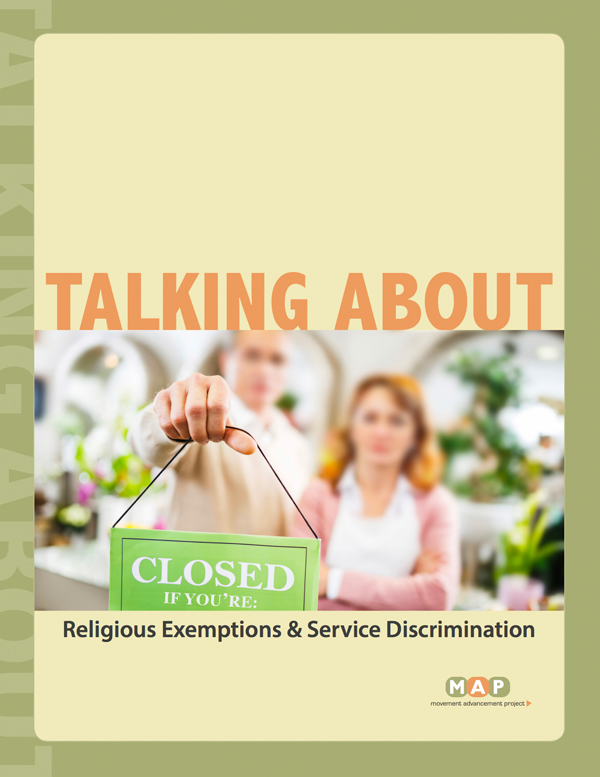The Bottom Line
Several states have recently proposed legislation to allow businesses to discriminate against customers who don’t conform to the specific religious beliefs that marriage should be restricted to a man and a woman, and that sex should be restricted to such marriages. These laws encourage discrimination against same-sex couples, unmarried couples and individuals, single parents, and others.
Talking About Religious Exemptions & Service Discrimination is a guide to effective conversations that can help broaden people's understanding of how these license-to-discriminate laws can open the floodgates to discrimination not just against same-sex couples and LGBT people, but also against unmarried couples, single parents and others across a wide array of areas and businesses.
Talking About Religious Exemptions & Service DiscriminationDownload
Recommended citation:
Movement Advancement Project. March 2017. "Talking About Religious Exemptions & Service Discrimination." MAP's
Talking About LGBT Issues Series.
https://www.lgbtmap.org/talking-about-religious-exemptions-service-discrimination (date of access).


